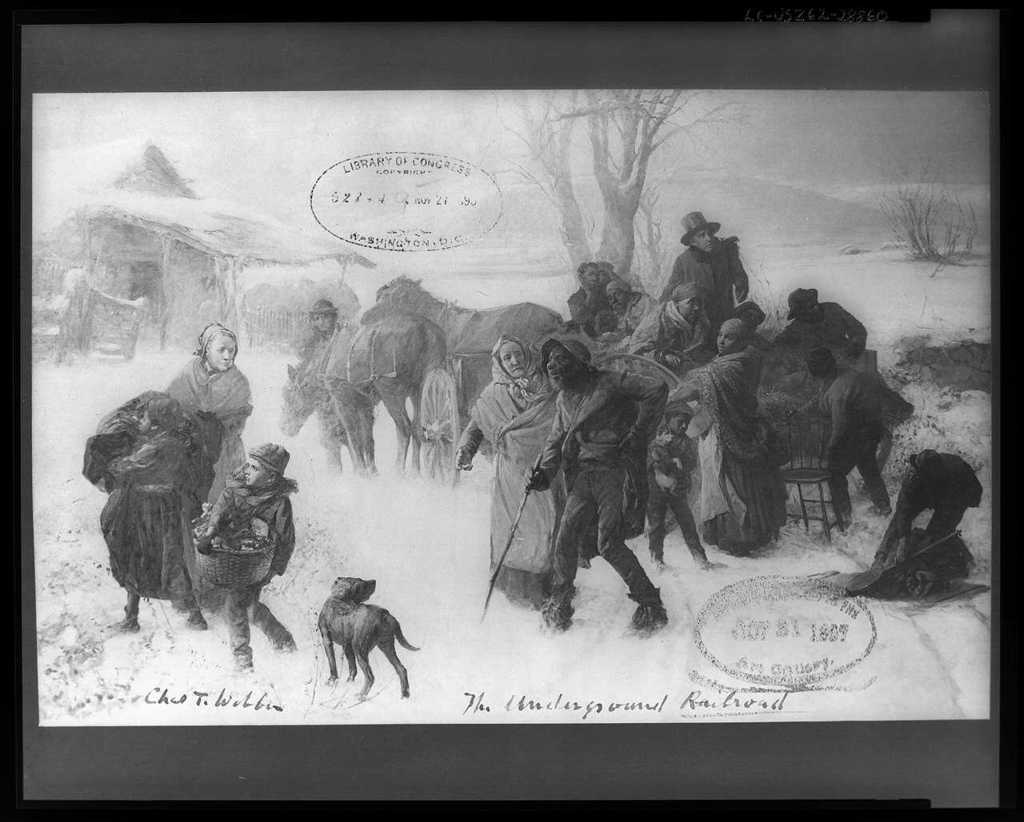What you’ll learn to do: analyze the reactions to the Compromise of 1850 and the Fugitive Slave Act

Figure 1. Reproduction of a painting by Charles T. Webber showing formerly enslaved fugitives arriving at Levi Coffin’s farm along the Underground Railroad.
The difficult process of reaching a compromise on slavery in 1850 exposed the sectional fault lines in the United States. After several months of rancorous debate, Congress passed five laws—known collectively as the Compromise of 1850—that people on both sides of the divide hoped had solved the nation’s problems. However, many northerners feared the impact of the Fugitive Slave Act, which made it a crime not only to help enslaved people escape, but also to fail to help capture them. Many Americans, flouted the Fugitive Slave Act by participating in the Underground Railroad, providing safe houses for enslaved people on the run from the South. Eight northern states passed personal liberty laws to counteract the effects of the Fugitive Slave Act.
Candela Citations
- US History. Provided by: OpenStax. Located at: https://openstax.org/books/us-history/pages/14-1-the-compromise-of-1850. License: CC BY: Attribution. License Terms: Access for free at https://openstax.org/books/us-history/pages/1-introduction
- The underground railroad / Chas. T. Webber.. Located at: https://picryl.com/media/the-underground-railroad-chas-t-webber. License: Public Domain: No Known Copyright